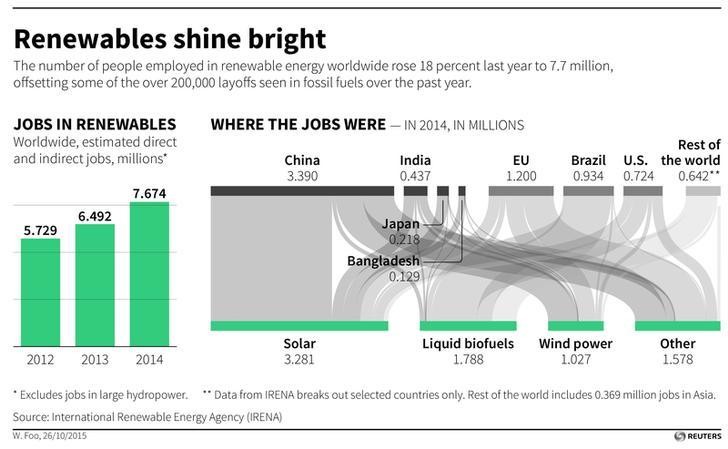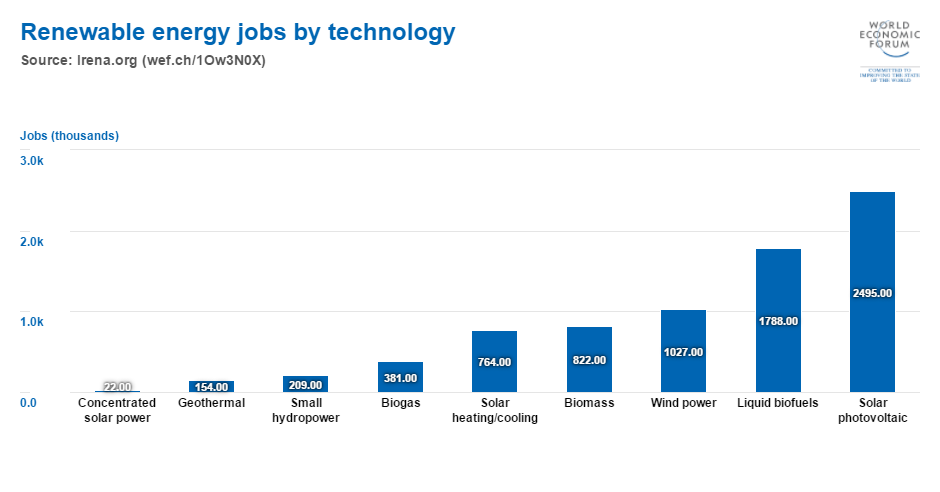5 steps towards a clean energy future

Energy security will only be achieved by cleverly combining all sources of renewable energy Image: REUTERS/Jean-Paul Pelissier
Those who demand an energy policy which guarantees supply security and competitive prices are absolutely right. We can thus ask ourselves why they still disapprove of renewable energies. If we pull these new energies from the grip of the environmentalists, in which they were trapped for too long, they represent a great economic and industrial opportunity for profit and job creation.
Even if climate change didn’t exist, it would still make sense to switch to renewable energies and clean technologies.
But to do so, there are five things we all need to know:
Diversification
No unique source of energy will be able to do the job alone. Energy security will only be achieved by cleverly combining all sources: thermal and photovoltaic solar energy, wind power, surface and deep geothermal heat, hydroelectricity obtained through dams and small rivers and biomass. A temporary phase using natural gas will in addition be needed before reaching 100% renewables.

Storage
Renewable energies are often criticized for their unreliability, when smart grids can in fact ensure a regular and large-scale distribution of the electricity they produce. It’s nevertheless true that energy storage remained a tricky issue for a long time and many failed trying. I’m thinking in particular of the spectacular collapse in 2013 of Better Place, an Israeli start-up that had managed to raise $1 billion and was supposedly going to change the world.
But recently, sufficient progress has been made to allow a real worldwide deployment of the technologies. Take Tesla for example. In 2015, they launched Powerwall, a home battery with a 7 kWh energy storage capacity, sufficient to power most homes during the evening using electricity generated by solar panels or the utility grid during the day. Not to mention their famous electric cars, with a range of 400km, where a recharge of only 20 minutes already allows the car to drive 200km or so.
Profitability
The cost of renewables has been plummeting for the last few years, and they’re now starting to become cost-competitive. Solar electricity is now cheaper to produce in Dubai than electricity coming from gas turbines. According to the IRENA (the International Renewable Energy Agency), solar photovoltaic module prices in 2014 were around 75% lower than their levels at the end of 2009. With every doubling of cumulative installed capacity, their prices are expected to fall by 18% to 22% and by 10% for wind power installations.

As for the feed-in-tariff, it must not be seen as a subsidy, but as an intelligent way to distribute the initial investment across the final consumers. This allows money to circulate, which is always beneficial for the economy. What all these energies have in common is that they provide local jobs and profit, instead of serving the interests of some remote and sometimes politically instable countries. That’s why, in sub-Saharan Africa, where two people out of three don’t have access to electricity, initiatives such as Akon Lighting Africa are equipping communities with solar-powered installations like street lamps, microgrids and domestic grids.
Moreover, the cost and the price of renewable energies actually match, which is not the case for fossil fuels. These may have a lower purchase price, but their real cost (resource depletion, oil slicks, CO2, wars, dismantling of nuclear plants, waste etc.) isn’t included in it, which makes them much more expensive.

Energy efficiency
Will renewable energies really manage to completely replace current energy sources? If our society continues to waste energy the way it does, certainly not. We must urgently realize that developing renewable energies and energy efficiency have to go hand in hand. Incandescent light bulbs, combustion engines, housing insulation, heating and cooling systems, electricity distribution networks… they’re all 100 years old.
Why are we so demanding when it comes to communication technologies, and not energetic systems? Look at Solar Impulse: thanks to the energy efficient technologies on board, like our engines, which are 97% energy efficient compared to 27% for regular thermal motors, we were able to fly for 117 hours straight, only relying on the sun’s rays. If that’s not proof of the potential of energy efficiency, then I don’t know what is.
Legal frameworks
In order to avoid the risk of distortion of competition feared by investors, it’s crucial we establish a legal framework which encourages replacing archaic polluting technologies with modern clean ones. This would already allow us to divide our CO2 emissions in two. No doubt that the COP21 treaty, ratified by 191 countries during the Paris Climate Conference in November, will greatly help in making this happen. But the success of the energy transition will also depend on the pioneering spirit of our governments. Let’s encourage them to be ambitious.
Author: Bertrand Piccard, Initiator; Chairman and Pilot, Solar Impulse, Switzerland. He is participating in the World Economic Forum’s Annual Meeting in Davos.
Don't miss any update on this topic
Create a free account and access your personalized content collection with our latest publications and analyses.
License and Republishing
World Economic Forum articles may be republished in accordance with the Creative Commons Attribution-NonCommercial-NoDerivatives 4.0 International Public License, and in accordance with our Terms of Use.
The views expressed in this article are those of the author alone and not the World Economic Forum.
Stay up to date:
Future of the Environment
Related topics:
Forum Stories newsletter
Bringing you weekly curated insights and analysis on the global issues that matter.
More on Forum in FocusSee all
Gayle Markovitz
October 29, 2025







